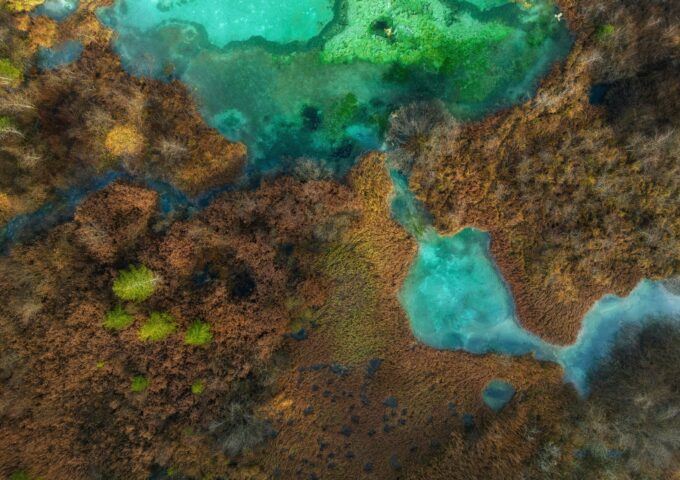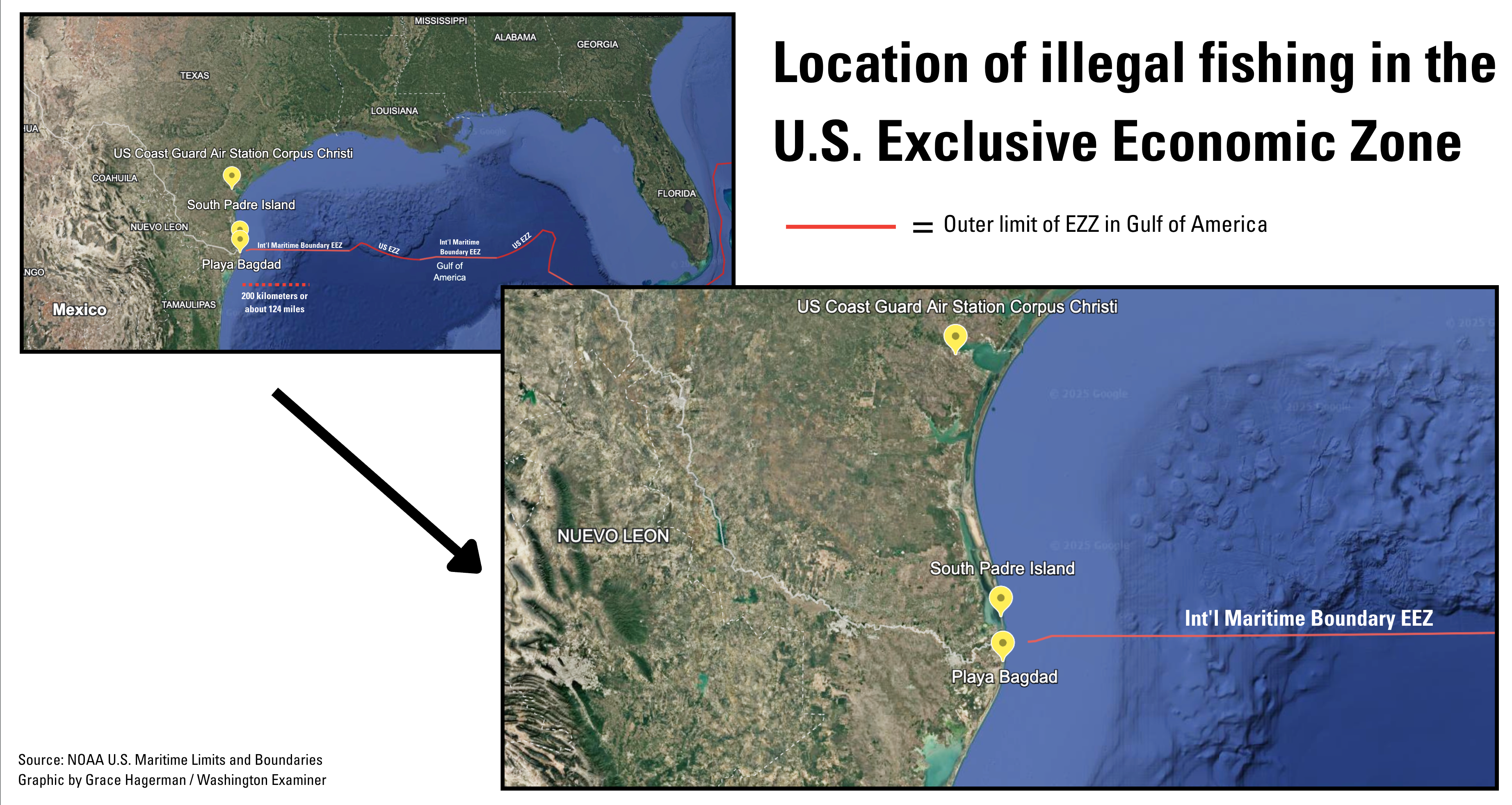Report on Global Coral Bleaching and Implications for Sustainable Development Goals
Executive Summary
A comprehensive analysis of recent environmental data indicates a severe global coral reef crisis, directly undermining key United Nations Sustainable Development Goals (SDGs), particularly SDG 14 (Life Below Water) and SDG 13 (Climate Action). Record-breaking ocean heatwaves from 2023 to 2025 have precipitated the fourth and most extensive global coral bleaching event on record, signaling that a critical climate tipping point may have been reached. This report synthesizes findings from leading scientific bodies to assess the scale of the crisis and its cascading impacts on planetary health and sustainable development.
SDG 14 (Life Below Water): Catastrophic Decline of Marine Ecosystems
Status of Global Coral Reefs (2024-2025)
The condition of the world’s coral reefs, vital for marine biodiversity, has reached a critical state, representing a direct failure to meet the targets of SDG 14, which calls for the conservation and sustainable use of oceans, seas, and marine resources.
- The Great Barrier Reef: The 2024-2025 Annual Summary Report documents the poorest condition in recorded history for the world’s largest living structure.
- Global Bleaching Event: The National Oceanic and Atmospheric Administration (NOAA) has confirmed the fourth global coral bleaching event, which is the most severe to date.
- Unprecedented Scale: From January 2023 to September 2025, bleaching-level heat stress has impacted 84.4% of the world’s coral reef areas, with mass bleaching documented in at least 83 countries. This far exceeds the 68.2% of reef area affected during the third global event (2014-2017).
SDG 13 (Climate Action): Failure of Global Mitigation Efforts
Primary Driver: Anthropogenic Ocean Warming
The root cause of the coral crisis is unprecedented ocean warming, a direct consequence of insufficient global progress on SDG 13. The ocean has absorbed over 90% of the excess heat trapped by anthropogenic greenhouse gas emissions, leading to a state of thermal stress that marine ecosystems cannot withstand.
- Record Heatwaves: A new record was set with over 500 continuous days of excessive ocean heatwaves from 2023 to 2025.
- Extreme Heat Stress: Marine heatwaves off Australia’s northwest coast reached +3 to 4°C above average from December 2024 to April 2025.
- Persistent Temperatures: Global sea surface temperatures remained at near-record levels throughout 2025, following record-shattering increases in 2023 and 2024.
Inadequacy of International Commitments
The international community’s failure to meet climate targets has directly enabled this ecological disaster. Despite agreements such as the Paris 2015 accord, actions have been insufficient to curb the drivers of climate change, directly contravening the objectives of SDG 13.
- Missed Targets: A decade after the Paris Agreement, nations are not close to meeting their Nationally Determined Contributions (NDCs) to halt global warming.
- Accelerating Emissions: The annual rate of atmospheric CO2 increase has accelerated from 1.25 ppm in 2000 to 3.75 ppm in 2024, a rise of over 200%.
Systemic Impacts on Broader Sustainable Development Goals
Crossing Planetary Tipping Points: Threats to SDG 15 (Life on Land) and SDG 11 (Sustainable Cities)
The coral reef collapse is identified as one of the first major Earth systems to pass a climate tipping point. This event is interconnected with other systemic failures that threaten additional SDGs.
- Global Tipping Report 2025: A compilation by 160 authors concludes that even under a 1.5°C warming scenario, all warm-water coral reefs are virtually certain to pass a point of no return.
- Failure of Carbon Sinks (SDG 15): Natural carbon sinks, such as the Amazon rainforest and Arctic permafrost, are now reportedly becoming sources of carbon emissions. This development threatens to neutralize gains from renewable energy and accelerates climate change.
- Risks to Coastal Communities (SDG 11): Accelerated melting of ice sheets in West Antarctica and Greenland, exacerbated by global heat, contributes to rising sea levels that pose a direct threat to the viability and safety of coastal megacities worldwide.
Future Outlook and Proposed Interventions
Potential Scenarios and Controversial Solutions
The trajectory of global warming has prompted discussion of large-scale interventions, highlighting the desperation and the need for global cooperation as envisioned in SDG 17 (Partnerships for the Goals).
- Natural Variability: A La Niña watch for winter 2025-2026 may offer temporary cooling, but it is unlikely to reverse the long-term, systemic warming trend.
- Geoengineering Proposals: Solar Radiation Management (SRM) is being considered as a last-resort “panic button” to block solar radiation. However, significant questions remain regarding its efficacy, safety, and potential damage to the ozone layer.
Analysis of Sustainable Development Goals in the Article
1. Which SDGs are addressed or connected to the issues highlighted in the article?
The article primarily addresses issues related to the following Sustainable Development Goals (SDGs):
- SDG 14: Life Below Water: This is the most central SDG discussed. The article’s main focus is the catastrophic mass bleaching of coral reefs, specifically the Great Barrier Reef, due to unprecedented ocean heatwaves. It describes coral reefs as “the rainforests of the sea” and crucial to marine life, highlighting the direct threat to marine ecosystems.
- SDG 13: Climate Action: The article explicitly identifies the root cause of coral bleaching as anthropogenic climate change. It discusses rising CO2 emissions, the failure of nations to meet their Paris 2015 commitments, global overheating, and the potential crossing of climate tipping points. The entire discussion is framed as a failure of global climate action.
- SDG 15: Life on Land: The article connects the broader climate crisis to terrestrial ecosystems by mentioning that former carbon sinks like the “Amazon rainforest and Arctic permafrost” are now at risk of becoming carbon sources. This highlights the degradation of crucial land-based ecosystems that regulate the climate.
- SDG 17: Partnerships for the Goals: The article critiques the effectiveness of global cooperation in tackling climate change. It points to the Paris 2015 climate conference as an example where commitments were made but not met, stating, “no major coordinated solutions ever play out.” This points to a failure in the global partnership required to achieve sustainable development.
2. What specific targets under those SDGs can be identified based on the article’s content?
Based on the issues discussed, the following specific SDG targets can be identified:
- Under SDG 14 (Life Below Water):
- Target 14.2: “By 2020, sustainably manage and protect marine and coastal ecosystems to avoid significant adverse impacts…” The article demonstrates a severe failure to meet this target by describing the Great Barrier Reef as being in its “poorest condition ever” and noting that mass bleaching has been confirmed in 83 countries, indicating significant adverse impacts on a global scale.
- Target 14.3: “Minimize and address the impacts of ocean acidification…” While the article focuses on ocean heat rather than acidification, heat is a primary impact of increased CO2 absorption by the oceans. The text states, “over 90% of the heat trapped by greenhouse gas emissions is absorbed by the ocean,” directly linking emissions to the degradation of the marine environment, which is the core principle of this target.
- Under SDG 13 (Climate Action):
- Target 13.1: “Strengthen resilience and adaptive capacity to climate-related hazards and natural disasters…” The global coral bleaching event is presented as a massive climate-related disaster. The article shows that the resilience of these ecosystems is being overwhelmed, not strengthened.
- Target 13.2: “Integrate climate change measures into national policies, strategies and planning.” The article explicitly criticizes the lack of progress in this area, stating that 10 years after the Paris agreement, nations “are not even close to meeting Paris ’15 Nationally Determined Contributions (NDC) to stop global heat.”
- Under SDG 15 (Life on Land):
- Target 15.3: “By 2030, combat desertification, restore degraded land and soil…” The article implies a severe degradation of critical ecosystems by noting that the Amazon rainforest and Arctic permafrost, which are vital carbon sinks, are now potentially “spewing emissions into the atmosphere.” This represents a reversal of their natural function and a form of ecosystem degradation.
- Under SDG 17 (Partnerships for the Goals):
- Target 17.14: “Enhance policy coherence for sustainable development.” The article highlights a lack of policy coherence, where nations commit to climate goals at conferences like Paris 2015 but fail to implement policies to curb emissions, which continue to rise.
3. Are there any indicators mentioned or implied in the article that can be used to measure progress towards the identified targets?
Yes, the article provides several specific quantitative and qualitative indicators that can be used to measure the status of the identified targets:
- Percentage of coral reef area impacted by heat stress: The article states that “bleaching-level heat stress has impacted 84.4% of the world’s coral reef area” between January 2023 and September 2025. This is a direct indicator for Target 14.2.
- Geographic extent of coral bleaching: The text mentions that “mass coral bleaching has been documented in at least 83 countries and territories,” which serves as an indicator of the global scale of the disaster (Target 14.2).
- Rate of atmospheric CO2 concentration: The article provides a clear metric for the failure of climate action (Target 13.2), noting that the annual rate of CO2 increase has risen from “1.25 ppm in 2000 to a soaring 3.75 ppm in 2024.”
- Ocean temperature and heatwave duration: The article cites “a new all-time record of ocean heatwaves was set in 2023-24-25 with 500 days of continuous excessive heatwaves” and heat stress levels of “+3 to 4°C” off the Kimberley coast. These are direct indicators of the climate-related hazards mentioned in Target 13.1 and the ocean impacts in Target 14.3.
- Status of terrestrial carbon sinks: The article implies an indicator for Target 15.3 by describing the conversion of the Amazon and Arctic permafrost from “former carbon sinks” into “carbon sources.” Measuring the net carbon flux of these ecosystems would be the formal indicator.
- Achievement of Nationally Determined Contributions (NDCs): The article provides a qualitative indicator for Target 17.14 by stating that nations “are not even close to meeting Paris ’15 Nationally Determined Contributions (NDC),” indicating a failure of international agreements.
4. Table of SDGs, Targets, and Indicators
| SDGs | Targets | Indicators Identified in the Article |
|---|---|---|
| SDG 14: Life Below Water | 14.2: Protect and restore marine and coastal ecosystems. |
|
| SDG 13: Climate Action | 13.1: Strengthen resilience to climate-related disasters. 13.2: Integrate climate change measures into national policies. |
|
| SDG 15: Life on Land | 15.3: Combat desertification and restore degraded land. |
|
| SDG 17: Partnerships for the Goals | 17.14: Enhance policy coherence for sustainable development. |
|
Source: counterpunch.org







